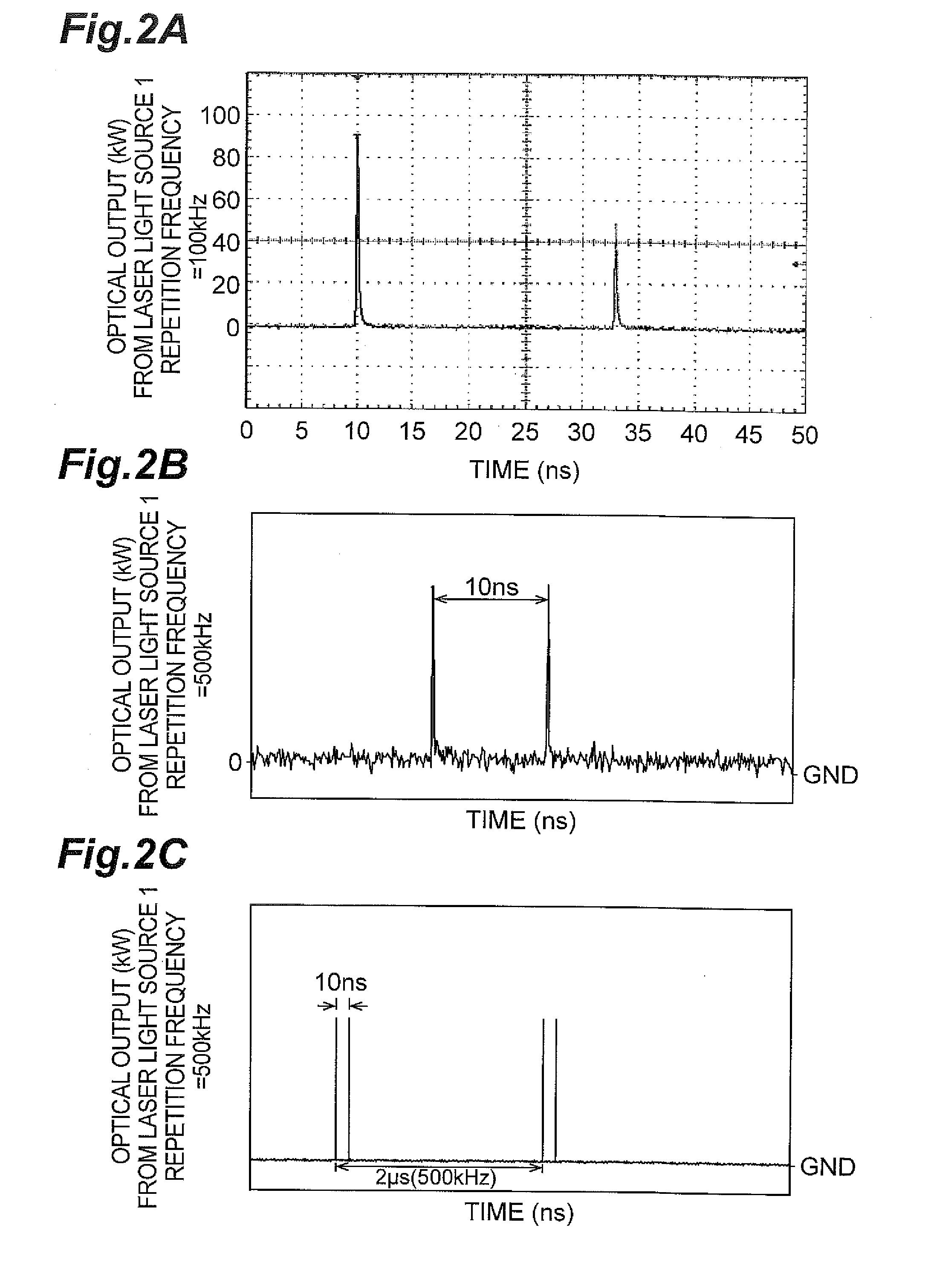Pulsed light generation method
a technology of pulse energy and light, applied in the direction of lasers, semiconductor lasers, manufacturing tools, etc., can solve the problems of the risk of deteriorating beam quality, and the limited pulse energy that determines the efficiency of laser processing, so as to increase the pulse peak, avoid appearance, and increase the core diameter of optical fibers
- Summary
- Abstract
- Description
- Claims
- Application Information
AI Technical Summary
Benefits of technology
Problems solved by technology
Method used
Image
Examples
Embodiment Construction
[0026]In the following, a best mode for carrying out the present invention is described in detail with reference to the accompanying drawings. In the description of the drawing, elements identical to each other are denoted with the same reference numerals, and overlapping description is omitted.
[0027]FIG. 1 is a view showing a configuration of an embodiment of a pulse light source (laser light source) for carrying out a pulsed light generation method according to the present invention. In FIG. 1, the pulse light source 1 has a MOPA (Master Oscillator Power Amplifier) structure, and comprises a seed light source 10 directly modulated by a modulator 11 and an optical fiber amplifier 20. The seed light source 10 includes a 1060 nm-band Fabry-Perot semiconductor laser that is directly pulse-modulated in a drive current range of 0 to 220 mA so as to realize a high repetition frequency of from 100 kHz to upper limit of 1 MHz or 10 MHz and a constant pulse width without depending on the re...
PUM
| Property | Measurement | Unit |
|---|---|---|
| repetition frequency | aaaaa | aaaaa |
| repetition frequency | aaaaa | aaaaa |
| repetition frequency | aaaaa | aaaaa |
Abstract
Description
Claims
Application Information
 Login to View More
Login to View More - R&D
- Intellectual Property
- Life Sciences
- Materials
- Tech Scout
- Unparalleled Data Quality
- Higher Quality Content
- 60% Fewer Hallucinations
Browse by: Latest US Patents, China's latest patents, Technical Efficacy Thesaurus, Application Domain, Technology Topic, Popular Technical Reports.
© 2025 PatSnap. All rights reserved.Legal|Privacy policy|Modern Slavery Act Transparency Statement|Sitemap|About US| Contact US: help@patsnap.com



